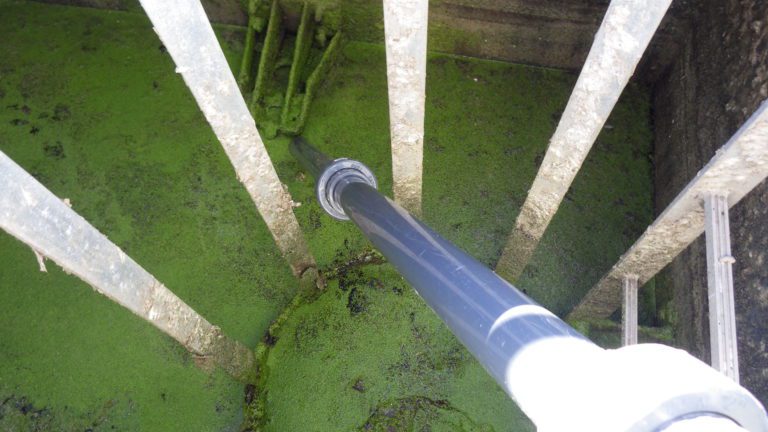SITUATION:
Situated in the central part of the state, Albuquerque is
the most populous city in New Mexico with a population
of nearly 600,000. Due to a combination of windborne
contamination upstream and long residence times in
the clarifiers, algae growth is a major source of solids
loading in the process stream. The current removal
strategy for this contaminant is limited to a stationary
coarse grate which captures a negligible amount of
algae, allowing a majority of the solids to pass directly
into, and fouling, the ultraviolet treatment units and
other downstream processes. This caused a reduction
in overall plant operational efficiency and significantly
increased the amount of downstream process
maintenance.
Equipment: Hammerhead On-site Screen Sizing
Location: Albuquerque, NM
Date: 2017
Consulting Engineering Firm: Brown and Caldwell


SOLUTION:
The Albuquerque Wastewater Treatment Plant worked with Hydro-Dyne to utilize the Hammerhead On-site Screen Sizing technology to better understand the characteristics of its clarifier effluent, and design a system to better protect against the intrusion of algae and other solids impacting their UV disinfection process.
Elimination of the suspended algae requires fine screening (~ 2mm), which can cause a large headloss if not sized properly. Twenty-three individual trials were performed using sample flows of wastewater to measure differential headlosses across a variety of mesh opening sizes. Each test scenario was programmed into the Hammerhead Shark’s onboard PLC; every test ran until the sample for the desired opening size reached a predetermined blinding measurement. At the completion of each test, the technician removed and visually inspected the sample screening elements to note blow through and other distinguishing characteristics of the samples.
RESULTS:
With the characteristics of the influent now known, screens designed to handle peak flows of 60 MGD with 2mm
wire mesh grid elements and variable frequency drives (VFD) were recommended. Screens of this design will
capture algae and other suspended solids in the most effective and efficient way possible during high loading
instances, while maintaining optimal headloss due to sudden algae blooms.
4750 118th Avenue North Clearwater, Florida 33762 USA Phone: +1 (813) 818-0777 Fax: (813) 818-0770
Copyright ©2024 Hydro-Dyne Engineering. All Rights Reserved. | Privacy Policy | Terms of Use